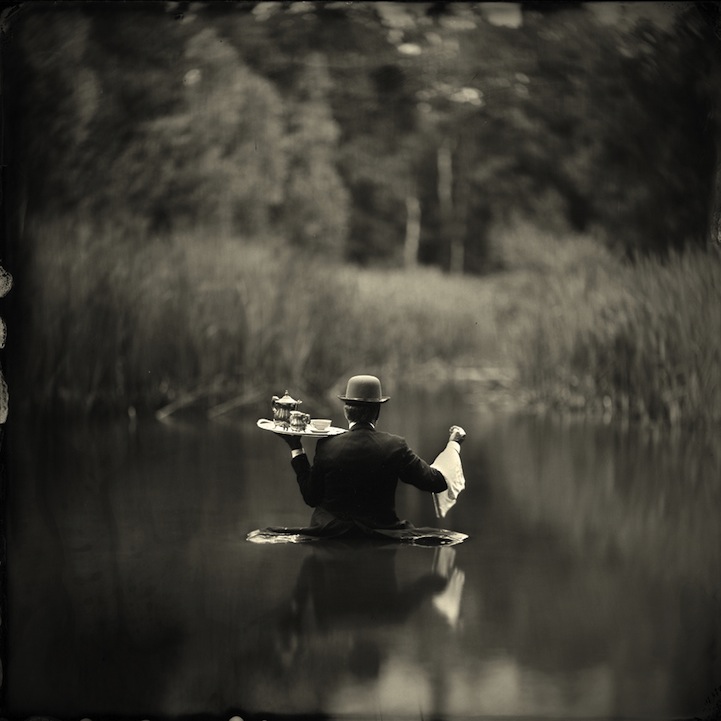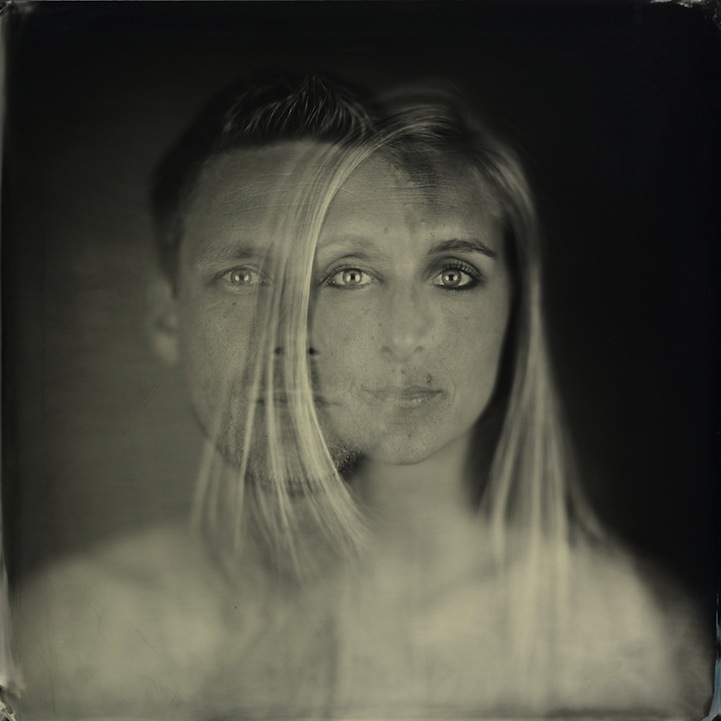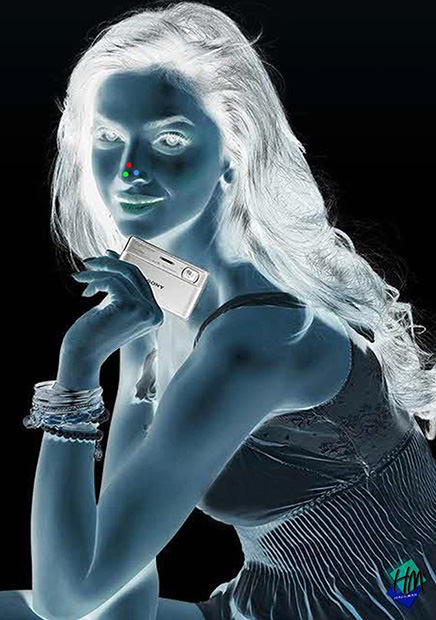
El proceso autochrome es el primer método exitoso para producir fotografías en color. El retrato de Emily Winthrop, de 1910, por John B. Trevor (mostrado arriba) es un clásico retrato de enfrentamiento directo del sujeto. Los suaves tonos de piel y pequeños reflejos rojos que detallan su expresión, son ejemplos de los delicados colores tipo-Impresionista de los autochromes y la evidencia asombrosa de un olvidado proceso del pasado.
En 1907, Auguste y Louis Lumière patentaron el primer proceso de color con éxito comercial, que llamaron Autochrome Lumiere. Se trataba de placas de cristal, luz de fondo, un snoot y, misteriosamente, fécula de patata. Esta combinación revolucionó la fotografía. A primera vista, el grano de la autochrome asemeja hoy al ruido digital no deseado. Pero es en realidad gránulos de almidón de patata en una matriz de tres colores. Estos pequeños puntos de color naranja-rojo, verde, violeta-azul dan a la imagen un aspecto nublado, reflexivo en el pasado.
El proceso autochrome utiliza placas de vidrio que eran recubiertas con una capa de almidón de patata mezclada con tintes de color que filtraba la luz antes de ser grabada en la emulsión. Producía una imagen granulada y positiva de colores pastel en una placa de vidrio. La placa sensibilizada autochrome duraba sólo unas pocas semanas. La emulsión era lenta, se necesitaban necesariamente exposiciones largas, y el proceso de revelado, a menudo realizado sobre la marcha, era difícil.
Los autocrhomes son hoy más frágiles y escasos en número, casi imposibles de mostrar en exposición, y en gran parte olvidados en la historia de la fotografía. Alfred Steiglitz y Edward Steichen, sólo por nombrar unos pocos, adoptaron las placas autochrome en sus prácticas. Steiglitz dijo: “Pronto el mundo será hecho en color, y el proceso Lumiere será responsable. Los Lumieres han dado al mundo un proceso que se ubicará en la historia de los inventos sorprendentes y maravillosos de aquellos otros dos franceses, Daguerre y Niepce.”
Al igual que el daguerrotipo y tintype, el autochrome era inmune a cualquier manipulación. Se podía hacer una exposición simple y revelada la placa, que era un pequeño objeto exclusivo, imposible de ampliar, difíciles de iluminar. El autochrome es simple en concepto, pero imposible de comprender, ¿cómo podrían dichos componentes tan simples producir una reliquia preciosa del pasado? Es difícil creer que estos vitrales de la capilla fotográfica realmente existieron alguna vez.
//
The autochrome process is the first successful method for producing color photographs. John B. Trevor’s portrait of Emily Winthrop from 1910 (shown above) is a classic direct-confrontation portrait of the subject. The muted skin tones and bits of red highlights that detail her expression are examples of the autochrome’s delicate Impressionist-like colors and astonishing evidence of a forgotten process of the past.
In 1907 Auguste and Louis Lumiere patented the first commercially successful color process, which they called Autochrome Lumiere. It involved glass plates, a backlight, snoot and, mysteriously, potato starch. This combination revolutionized photography. At first glance, the graininess of the autochrome resembles today’s undesirable digital noise. But it’s actually the potato starch granules in a three-color matrix. These small dots of orange-red, green, and violet-blue give the image a cloudy, reflective porthole into the past.
The autochrome process uses glass plates that where coated with a layer of potato starch mixed with color dyes that filtered light before it was recorded on the emulsion. It surrendered a grainy, positive image of quiet pastels on a glass plate. The sensitized autochrome plate lasted only a few weeks. The emulsion was slow, exposures were necessarily long and the developing process, often done in the field, was difficult.
Today autochromes are more fragile and few in number, almost impossible to exhibit, and largely forgotten in the history of photography. Alfred Steiglitz and Edward Steichen, just to name a few, adopted autochrome plates in their practices. Steiglitz said, “Soon the world will be color-made, and the Lumiere will be responsible. The Lumieres have given the world a process which in history will rank with the startling and wonderful inventions of those two other Frenchmen, Daguerre and Niepce.”
Like the daguerreotype and tintype, the autochrome was immune to any manipulation. One could make a simply exposure and developed the plate, which was a small exclusive object, impossible to enlarge, difficult to illuminate. The autochrome is simple in concept but impossible to comprehend; how could such simple components could produce such a beautiful relict of the past? It is hard to believe that these stained glass windows of the photographic chapel truly ever existed.
(by Brian Paumier, via: http://fansinaflashbulb.wordpress.com/)




Compartir esto // Share this:











































